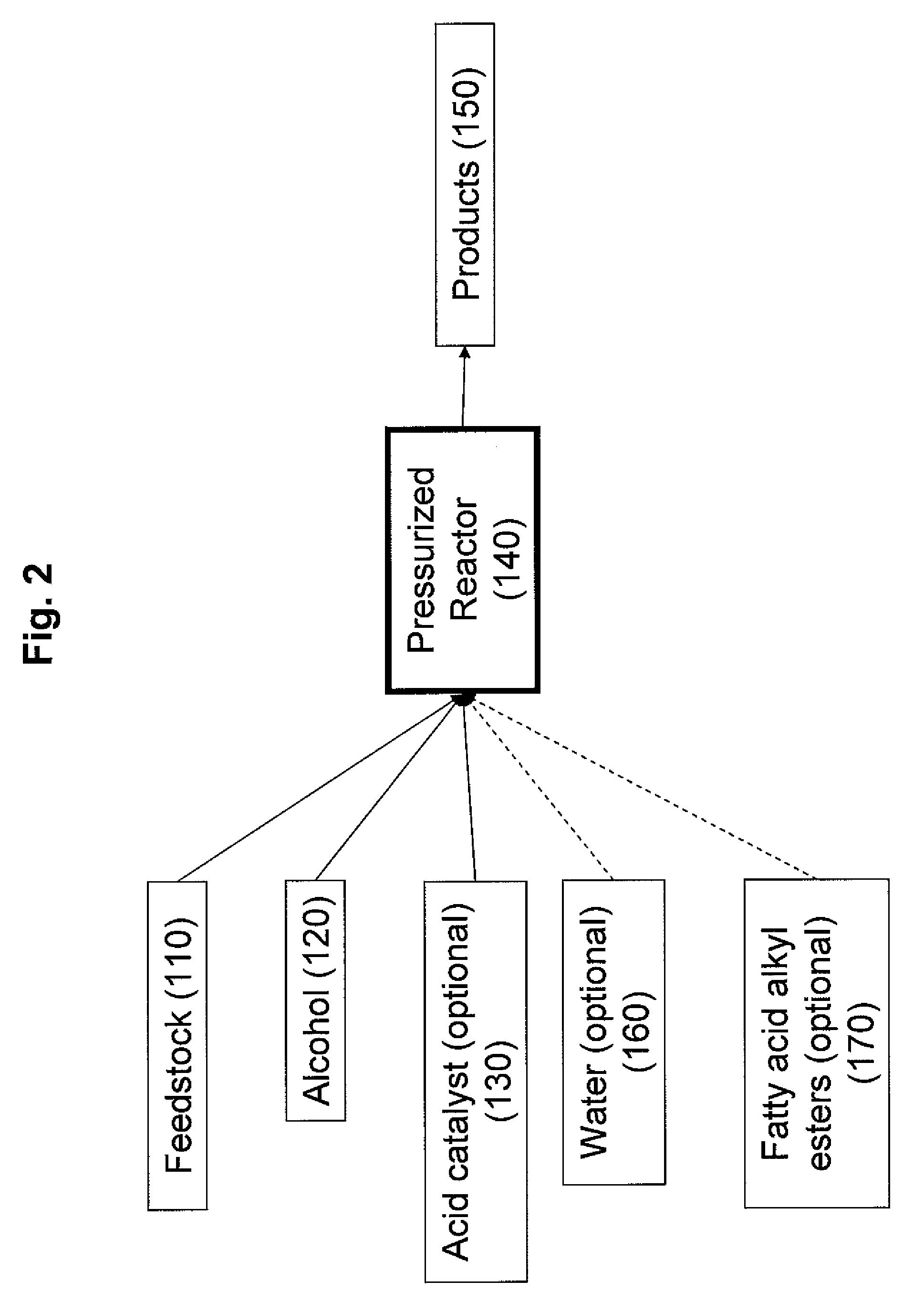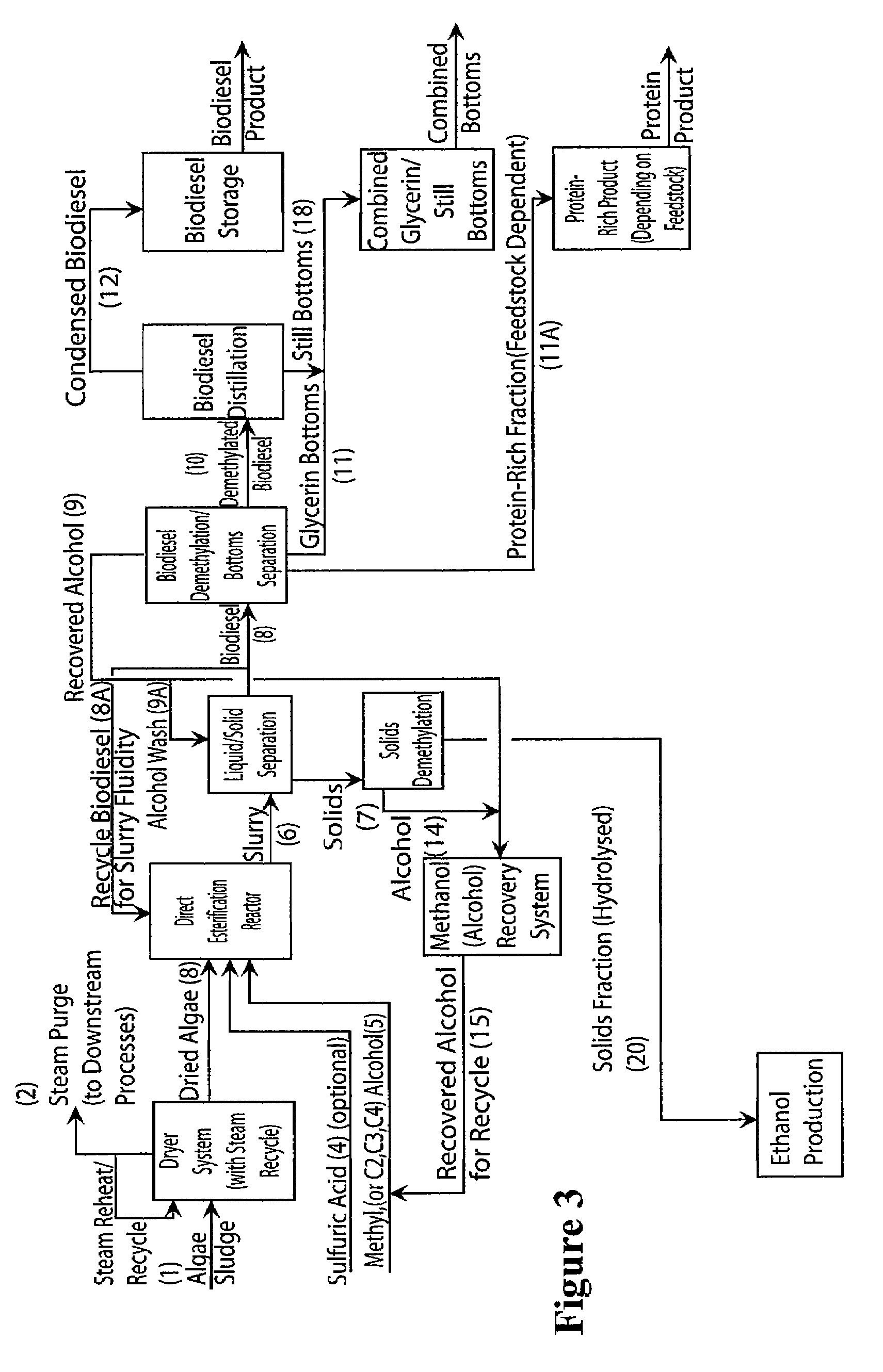Method for conversion of oil-containing algae to 1,3-propanediol
a technology of oil-containing algae and 1,3-propanediol, which is applied in the preparation of oxygen-containing compounds, organic chemistry, chemistry apparatus and processes, etc., can solve the problems of high cost and non-sustainability of industrial chemical production
- Summary
- Abstract
- Description
- Claims
- Application Information
AI Technical Summary
Benefits of technology
Problems solved by technology
Method used
Image
Examples
example
Conversion of EPA Into 1,3 PDO
[0053]EPA was oxidized using H2O2 at a mass ratio of 1:1 (EPA:H2O2) and at 200° C. for 1 to 60 minutes to yield malonic acid.
[0054]The malonic acid was then combined with alcohol at a molar ratio of 2.5:1 (alcohol to malonic acid) in the presence of an acidic catalyst, heated to 150-200° C. at a pressure of 25-75 bar, and allowed to react for 1-60 minutes to yield malonic diester.
[0055]Malonic diester was then mixed with hydrogen at a molar ratio of 10:1 (H2 to malonic diester) in the presence of a catalyst at a temperature of 200-250° C. for 1-60 minutes to yield 1,3-PDO.
PUM
| Property | Measurement | Unit |
|---|---|---|
| pressure | aaaaa | aaaaa |
| temperature | aaaaa | aaaaa |
| partial pressure | aaaaa | aaaaa |
Abstract
Description
Claims
Application Information
 Login to View More
Login to View More - R&D Engineer
- R&D Manager
- IP Professional
- Industry Leading Data Capabilities
- Powerful AI technology
- Patent DNA Extraction
Browse by: Latest US Patents, China's latest patents, Technical Efficacy Thesaurus, Application Domain, Technology Topic, Popular Technical Reports.
© 2024 PatSnap. All rights reserved.Legal|Privacy policy|Modern Slavery Act Transparency Statement|Sitemap|About US| Contact US: help@patsnap.com










